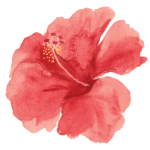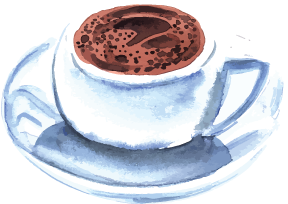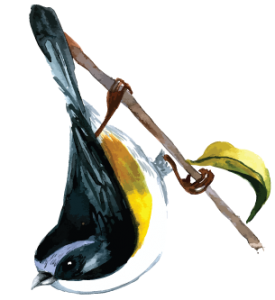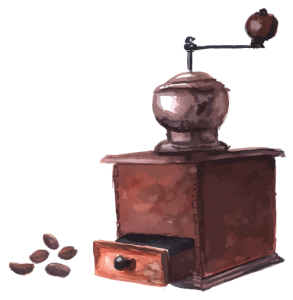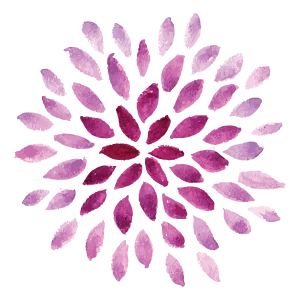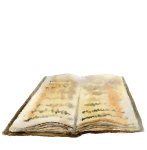Children have an innate ability to feel this sense of connection. You see it in their overflowing energy at play, their love for animals, and their awe of the simplest rock or a wiggly earthworm. The following stories and poems were the result of an innovative poetry program for children called Language of the Awakened Heart. This program was a collaborative effort between myself, a community-based artist in residence and Alex Kochkin, president of the nonprofit organization Fund for Global Awakening. Together, we developed ten lesson plans that were made into a poetry guidebook that explores spiritual values such as joy, generosity, peace, forgiveness, and praise. These lessons were designed to uncover a wisdom we felt children already had but didn’t have the means to express. Each lesson explained the use of different poetic tools such as metaphor or simile, using visualizations and other means to tap into the deep well of the child’s imagination. What came out of this was some amazing poetry and art by children grades 2–7.
One of the lessons from Language of the Awakened Heart focuses on the power of praise. The poetic form explained in this lesson is the ode, a form of poetry that exalts its subject matter by complimenting it. A 7th-grade student who had no prior interest in poetry wrote a moving poem from this lesson titled “An Ode to My Mom.” This poem came as a total surprise to the mother whom the ode was written for. The mother had no idea her daughter felt so deeply about her until she found the poem after several requests from the teacher to locate it for publication. It literally brought tears to her eyes when she read it. This experience led to an open dialogue between mother and daughter who at the time did not live together. This is a powerful example of the healing power of praise when given a place for expression.
![]()
Ode to My Mom
My mom, the one who nourished me when I was young.
The one who held me when I cried and who wiped my tears.
The one who tucked me in when the nights were long.
The one who cut her long golden brown locks of hair
so I would not hide in them when I was shy.
She who gave me life when I was lifeless
and the one who loves me most of all.
~Theana, 7th grade
![]()
The following two poems are other examples of odes written by children from the same lesson plan.
Ode to Mother Earth
In outer space, you look like a beautiful blue ball
spinning so gracefully.
On your orbit around the sun,
You look as if you are spinning through
a circular river of sunlight.
Your rocky surface is your skin.
Your trees are your fingers
reaching for the moon
that you may never catch.
Your tears are the rainfall that gives life
to all plants and animals.
Your oceans feed the clouds
that provide the tears of life.
And your mountains are where I long to be
because that is where I see your beauty best.
~Devin, 5th grade
![]()
Ode to Sleep
Happiness you give,
you give me a new life,
you give my limbs a massage.
When I am with you, I think of all things
no one has known.
that are even new to me.
You let me think up my life, my future,
you help me so much.
I owe you so much for your ideas,
your time.
Yes, you renew my life with the energy you give.
You are my other world,
my best world, my favorite world.
~Catherine, 6th grade
![]()
Another lesson plan from Language of the Awakened Heart involves exploring the mystery of oneself using the poetic tool of imagery. It is called the “I AM” poem and has been a success with even “problematic” students. Here a student can describe the various things he or she feels connected to within a nonthreatening but revealing framework. In one school where Language of the Awakened Heart was being taught, a fifth-grade student named “John” had already been labeled as boy with behavior problems. When first introduced to poetry, he complained he couldn’t write and didn’t have any ideas. By the second lesson, he became so disruptive that he was expelled from class. A week later, John sought out the poetry teacher and begged her to reinstate him. After agreeing not to disturb the class and with encouragement from the teacher, John began writing a poem from the “I AM” lesson. He even stayed into recess time to finish the lesson. The following poem is a result of his efforts and reveals John’s feelings of anger and isolation all beautifully contained within the power of imagery.
I am an explorer on the icy surface of Jupiter’s moon.
I am a star giving birth to a solar system of planets.
I am a creature of a desolate world.
I am a single asteroid in the great yellow rings of Saturn.
I am a supernova filled with rage.
I am all these things and I am a silent star.
Many of the lessons from Language of the Awakened Heart touch upon various subjects that instill a sense of well-being. One of these lessons is on joy and provides a framework for children to describe what joy is for them. The poetic device explained is the metaphor — a direct statement that compares two unlikely objects and suggests they are alike.
During one of the lessons on joy, a second-grade student named Sierra stated, “The wind is also joy. I like the way it blows through my hair.” Sierra was a quiet student and didn’t like reading her poetry out loud. Yet she continually surprised me with the way she would construct her poems that were far advanced for her second-grade class. At this age, children often struggle with spelling and cannot comprehend abstract topics. Yet there are always a few who do. It is important to aim high with the material presented to see how ingenious the children really are.
![]()
My Joy
Joy is a rose petal
that falls into a rain puddle.
The wind is also joy.
I like the way it blows through my hair.
Joy is a fresh brownie from the oven.
Joy is a butterfly
that lands on a flower.
Joy is a kitten or a puppy.
Joy is whatever makes you happy.
~Sierra, 2nd grade
![]()
Here is another wonderful articulation of joy by a sixth-grade student.
Joy is a fire with hot chocolate in my hands,
and snuggling up to my mom,
her body warming mine
on a cold winter night,
the cotton soft snow falling outside.
Joy is swimming on a hot summer day,
I feel as free as the wind.
Joy is
the beautiful colors of autumn,
the orange like gold,
the red like ruby,
as they fall from the trees and crunch like chips under my feet.
Joy is friends and family joined together,
and me being one of the many.
~Catherine, 6th grade
![]()
The poet Allen Ginsberg says to young writers, “You are a genius all the time!” This statement instills a sense of self-esteem, giving the poets permission to fully express their ideas and feelings on the page. The word genius comes from the word genie, which means “the spirit that inhabits us.” All children possess this spirit, and genius happens at any age.
It was my privilege to be able to pilot the Language of the Awakened Heart program in three schools and see the “genie” appear in many of the students’ poems through their choice of words expressing authentic feelings. I love working with children because they are candid and spontaneous, and they surprise me with what they do know. I call them little parakeets of desire — a magenta-winged whirlwind of activity! They add such color to our adult world, a vibrancy that needs expression and a wisdom that needs a home.
This article appeared in Nimble Spirit, The Literary Spirituality Review, and a version of this article appeared in Paths of Learning magazine (Summer 2003).
![]()

